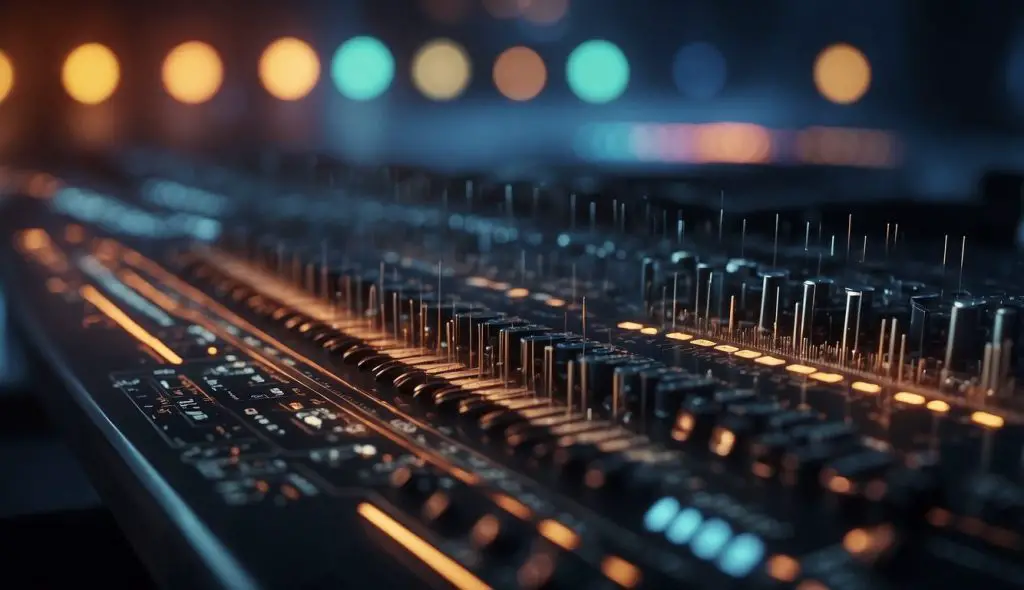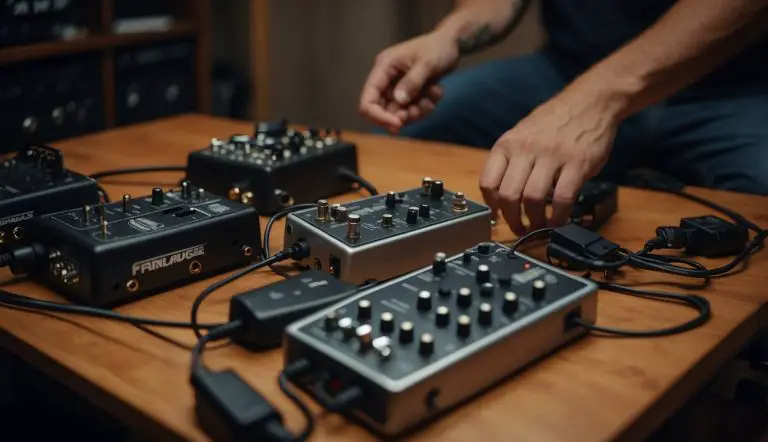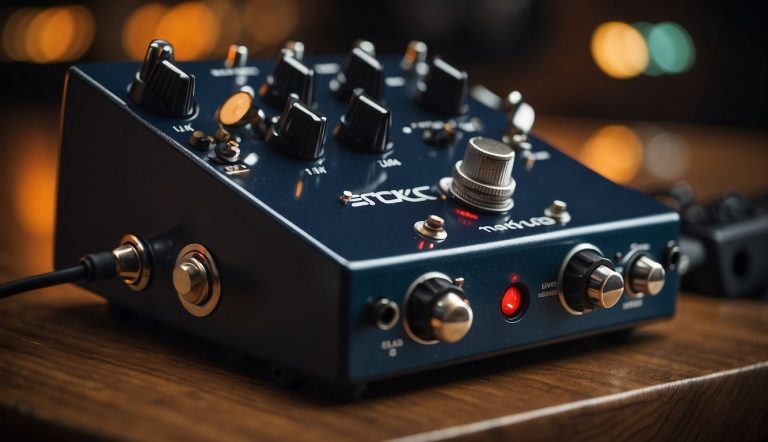What Does Modulation Do in Music Production? – Understanding the Basics
Modulation is a fundamental concept in music production that can be used to create a wide range of effects. It is the process of changing the pitch, volume, or tone of a sound over time. Modulation is used to add interest, depth, and complexity to a track.
Modulation can be applied to any element of a track, from individual notes to entire sections. It can be used to create a variety of effects, including vibrato, tremolo, chorus, and flanger.

Understanding the basics of modulation is essential for any music producer. It allows them to add depth and interest to their tracks.
There are many technical aspects of modulation that are important to understand. These include the different types of modulation, how to control the depth and speed of the effect, and how to apply modulation to different elements of a track.
Additionally, there are many creative applications of modulation. For example, using it to create unique textures and rhythms, or to add movement and interest to a track.
Key Points
- Modulation is the process of changing the pitch, volume, or tone of a sound over time.
- Understanding the basics of modulation is essential for any music producer.
- Modulation can be used creatively to add unique textures and rhythms to a track.
Table of Contents
Basics of Modulation in Music Production
Understanding Modulation
Modulation is a fundamental concept in music production that involves changing the characteristics of a sound wave. It is achieved by using a modulator to control one or more parameters of a sound wave, such as its pitch, volume, or tone.
In music theory, modulation refers to the process of changing the key or tonality of a piece of music. This can be done for various reasons, such as to add interest or to create a sense of form. However, in music production, modulation is used to create interest and variation in sound.
Types of Modulation
There are several types of modulation used in music production. The most common types include:
- Amplitude Modulation (AM)
- Frequency Modulation (FM)
- Phase Modulation (PM)
- Ring Modulation (RM)
Each type of modulation has its unique characteristics and is used to achieve specific effects in sound. For example, AM is used to add depth and warmth to a sound, while FM is used to create complex and evolving sounds.
In addition to these types of modulation, there are also various modulators used in music production. These include LFOs, Envelopes, and MIDI Controllers.
These modulators are used to control the parameters of a sound wave and create interesting and dynamic sounds.
Technical Aspects of Modulation
Key Signatures and Chord Progressions
In music production, modulation is an essential technique used to change the key of a song or piece of music. This change in key is achieved by moving from one key signature to another, and it involves careful consideration of chord progressions.
A pivot chord is a chord that is common to both the original key and the new key. It is used to facilitate the transition between the two keys.
When modulating from one key to another, it is important to choose a key that is musically related to the original key. For example, if a song is in G major, a modulation to D major would be a logical choice, as these keys are closely related.
The choice of key will also affect the chord progressions used in the new key, so it is important to consider the harmonic implications of the modulation.
Modulation Effects and Parameters
Modulation effects are a common tool used in music production to add depth and interest to sound. These effects can be achieved using a variety of parameters, including amplitude, phase, and harmonic distortion.
The choice of waveform and the use of vibrato and tremolo effects can also influence the overall sound of the modulation.
In terms of modulation parameters, amplitude modulation (AM) is a common technique used to change the volume of a sound over time. Meanwhile, phase modulation (PM) is another technique that can be used to create a variety of effects, including vibrato and tremolo.
Harmonic distortion can also be used to add depth and character to a sound.
When using modulation effects, it is important to consider the depth and intensity of the effect. Too much modulation can result in a sound that is too busy or chaotic, while too little modulation can result in a sound that is too static or dull.
The use of modulation effects should be carefully considered to achieve the desired effect without overwhelming the listener.
Creative Applications of Modulation
Modulation in Songwriting
As a songwriter, I’ve found modulation to be an incredibly useful tool in creating dynamic and interesting music. Modulation refers to the process of changing from one key to another within a piece of music.
This can be done in a variety of ways, including changing the tonic (or “home”) note of the song, using closely related keys, or using chromatic modulation.
One common way that modulation is used in songwriting is to create movement and tension within a piece of music. By changing keys, a songwriter can create a sense of forward motion or excitement in their music.
This can be especially effective in pop songs, where a key change can create a memorable and catchy hook.
Another way that modulation can be used in songwriting is to create a sense of story or narrative within a piece of music.
For example, in Beyonce’s “Love On Top,” the song starts in a minor key before modulating up a half step several times throughout the song. This creates a sense of rising tension and excitement, mirroring the lyrics of the song as Beyonce sings about falling more deeply in love.
Expressive Techniques and Styles
Modulation can also be used as an expressive technique in music production. For example, a guitar player might use a chain modulation to create a sense of movement and excitement in their playing.
This involves modulating from one key to another several times in quick succession, creating a sense of dizzying motion and excitement.
In addition to creating movement and excitement, modulation can also be used to create a sense of style or structure within a piece of music.
For example, Mozart frequently used modulation to create complex and interesting musical structures within his compositions. By using the circle of fifths and common chord progressions, he was able to create intricate and beautiful music that still resonates with listeners today.
Modulation in Music Technology
As a music producer, I have come across various modulation techniques in music production. Modulation is a technique that is used to manipulate the characteristics of a sound wave to create a more complex and interesting sound. In this section, I will discuss some of the ways that modulation is used in music technology.
Synthesizers and Modulation
Synthesizers are electronic musical instruments that can create a wide range of sounds. One of the techniques used in synthesizers is modulation.
Modulation can be used to create a range of different effects, including vibrato, tremolo, and filtering effects.
Low-frequency oscillators (LFOs) are often used to modulate the frequency or amplitude of a sound wave.
LFOs can be used to create vibrato and tremolo effects by modulating the pitch or volume of a sound wave. Envelopes can also be used to modulate the characteristics of a sound wave.
For example, an envelope can be used to modulate the filter cutoff of a sound wave, creating a filtering effect.
Advanced Modulation Techniques
In addition to basic modulation techniques, there are also more advanced modulation techniques that can be used in music production.
For example, frequency modulation (FM) and amplitude modulation (AM) can be used to create complex and interesting sounds.
FM synthesis involves modulating the frequency of one oscillator with another oscillator. This creates a more complex sound that can be used to create a range of different effects.
Meanwhile, AM synthesis involves modulating the amplitude of a carrier signal with a modulator signal. This can be used to create a range of different effects, including phaser and flanger effects.
Common-chord modulation is another advanced modulation technique that is used in music production.
This involves modulating between two keys that share a common chord. For example, modulating between the home key and the IV chord can create a sense of tension and release in a piece of music.
Frequently Asked Questions
How does amplitude modulation affect a musical piece?
Amplitude modulation, or AM, is a type of modulation that involves varying the amplitude, or volume, of a signal. In music production, AM can be used to add depth and dimension to a track.
By modulating the amplitude of a sound wave, producers can create a range of effects, from subtle tremors to full-on distortion. The result is a more dynamic and interesting sound that can help a musical piece stand out.
What is the role of chorus in altering sound characteristics?
Chorus is a type of modulation that involves duplicating a sound and delaying it slightly.
By doing so, producers can create a richer, fuller sound that is often used to add depth and dimension to a track. Chorus can also be used to create a sense of movement or space, as the delayed sound gives the impression of multiple sources.
Overall, chorus is a versatile tool for altering sound characteristics and can be used in a variety of musical genres.
In what ways does flanging contribute to music production?
Flanging is a type of modulation that involves mixing two identical signals together, but with one of them being delayed slightly.
The result is a sweeping, jet-like sound that can be used to add movement and texture to a track. Flanging is often used in guitar solos and other lead parts, as it can create a sense of excitement and energy. It can also be used more subtly, to add depth and dimension to a mix.
Can you explain the impact of tremolo on a track’s dynamics?
Tremolo is a type of modulation that involves varying the volume of a signal at a regular rate. By doing so, producers can create a pulsing, rhythmic effect that can add energy and excitement to a track.
Tremolo can be used on a range of instruments, from guitars to synths, and is often used in electronic and dance music. The impact of tremolo on a track’s dynamics can be significant, as it can create a sense of movement and help build tension.
What are the different types of modulation used by producers?
There are many different types of modulation used by producers. These include amplitude modulation (AM), frequency modulation (FM), phase modulation (PM), chorus, flanging, and tremolo.
Each type of modulation has its own unique characteristics and can be used to achieve different effects. Producers often experiment with different types of modulation to find the best fit for a particular track.
How can one recognize modulation when analyzing a song?
Modulation can be recognized by listening for changes in a track’s sound characteristics. For example, if a guitar solo suddenly becomes more intense and sweeping, it may be a result of flagging.
Similarly, if a synth suddenly becomes more pulsing and rhythmic, it may be a result of tremolo. By listening closely to a track and paying attention to changes in sound, one can often identify the types of modulation used by the producer.






